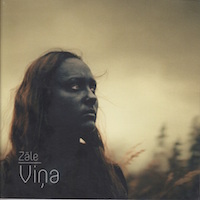One of my favorite coffee mugs has wisdom from A Prairie Home Companion taking up one side – it ends with the admonition “Drink your coffee. It’s not the best you’ll ever get, but it’s good enough.” At the risk of damning with faint praise, the sentiments on that mug came to mind during the 16th West Coast Latvian Song Festival in San Jose, California. The event ran from September 3-7, 2015, and while it is the smallest of the North American diaspora song festivals, that’s merely a question of scope.
San Jose was an excellent location. The weather was mild and sunny, and the proximity of the venues to one another was ideal. All of the hotels were within a few blocks, and only the church in which the Sacred Music Concert was held was more than one street crossing from the festival headquarters. The fact that a Comic Con was being held next door added some interesting juxtapositions – girls in superhero and manga outfits striding next to girls in Latvian folk outfits, and I had never before ridden up in a crowded song festival elevator with zombies mixed into the fray. Better yet, a bacon festival in the adjoining park on Saturday and Sunday added truly unique meal options based on an ingredient near and dear to Latvian hearts.
The festival featured enough ticketed events to keep a person busy, but not so many that a person couldn’t, with enough stamina and fortitude, experience them all AND find time to eat. Perfect! On one end of coffee spectrum – approaching “If not the best I’ve ever seen, then in the ballpark” were the Sacred Music Concert and the popular music/multimedia event “Here We Are”. Both featured a mix of professional and highly experienced amateur musicians and benefitted from obvious attention to detail.
While the sold-out Sacred Music Concert was of high quality throughout, the middle portion, performed by the choir Cantus Fortis from Latvia and conducted by Ivars Cinkuss, was especially fresh and unique. “O, Salutaris Hostia,” featuring sopranos Ginta Rūse and Jūlija Norvele, was the subject of much after-event praise, as was the inclusion of “No sirds slavēsim Mariju.” “Here We Are” was completely different in tone, but just as big a crowd-pleaser. A cabaret-type show featuring a finely coordinated mix of music, text, and multi-media aspects, it sailed through this challenging premise with hardly a glitch. If there was similarity between some numbers, it hardly mattered – there was always something to watch, listen to, feel, and laugh about, and it was all executed splendidly.
The comedic play, Precies, māsiņ’ (Marry, Little Sister), seemed the event closest to the “Not the best I’ve ever seen” end of the scale. The actors, all professionals from Latvia, were unquestionably talented, the play did draw laughs, and the audience certainly appreciated Guntis Veits’ musical numbers; however, the plot and continuity reminded me of little more than a summer camp skit, stretched out to feature length. “OK…you’ll sing… then we’ll have some jokes, mug it up a bit… then you’ll sing again…” “Wait, why will he sing?” “Who cares? But…ok…how about if she gets all worked up, mugs some more, so I’ll ask him to sing to calm her down?” “Yeah, yeah, that’ll work!” Polishing the script and eliminating a few cheap jokes would have served this event well.
In between, the folk dancing event did not have the precision of the events in Latvia, but everyone seemed to have a good time. The music, which was a mix of live and recorded, was fun, yet another dash of multi-media added to the feel, the few “oh no, I forgot what comes next” moments resulted in no pile-ups, and the tiny tot moments were as charming as ever – kids trying to dance and simultaneously watch themselves on the large screens was a new cute moment subgenre. Similarly, while the combined choir concert also had a few lesser moments, most numbers, notably the Latvian Seasons Cantata, conducted by its composer, Maija Riekstiņa, were crowd-pleasers, watching Juris Ķeniņš conduct is entertaining no matter what the singers do, the chestnuts Gaismas pils and Tēvijai were done justice and with no concerns whether the soloist in the latter would wipe out, and Tev mūžam dzīvot, Latvija and Pūt vējiņi, sung with audience participation, were emotional as ever.
To round out the schedule, Sunday morning’s religious events were both well-attended and well-received by participants. Evening musical events were all rollicking good times: the folklore group Lāčkāja played on Thursday, the group “All Folked Up” on Saturday, and Adam Zahl provided dance music for the holiday ball on Sunday. The greetings at the opening ceremony were kept to tolerable levels, and though seating at the festival banquet went off the tracks, everyone eventually ate well and enjoyed themselves.
The marketplace offered the usual and the unusual in jewelry, clothing, noshes – did you know Lay’s makes creamy mushroom-flavored chips for European markets?! Those sold out quickly – music, and other Latvian goods. There was a small art exhibit, a corner room contained a zolite game for a while, novuss games at other times, and displays by Latvian organizations of various stripes filled the hallways.
And then there were the intangibles, and those, of course, make a song festival more than just a series of events. The first friends you meet in the hotel lobby (“I didn’t know you were coming!!”), hearing Latvian spoken by strangers passing by as you eat lunch in an outdoor café (and of course calling out a greeting), being there when a choir spontaneously breaks into song en route to a concert, seeing people you haven’t seen in (fill in ridiculous amount of years) since (which event was that?).
In short, the coffee and the song festival were both just fine, thank you very much!




